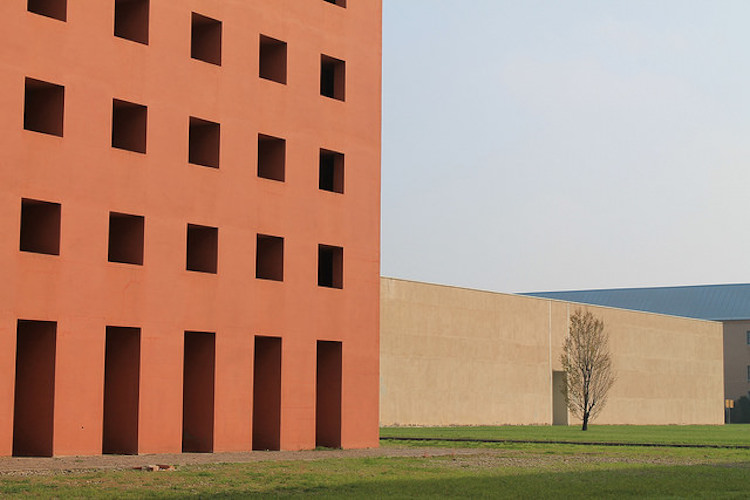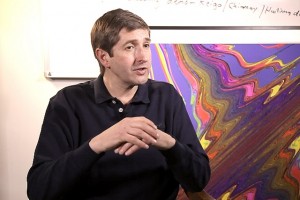Innovations in Energy
How much do wind and solar energy cost, and why haven't we fully transitioned to RES yet?

Some of the biggest earthquakes since the turn of the century have been in Iran (2003), Sumatra (2004), Pakistan (2005), China (2008), Haiti (2010), and Japan (2011). The earthquake in Haiti alone accounted for over 160,000 fatalities and a displacement of 1.5 million people.
Earthquakes are when full plane ruptures and masses of rocks suddenly slip past one another beneath the subsurface. Usually, earthquakes are caused by plate tectonic forces. As plates move past one another, they build up stress, and then at some point, the rock can no longer withstand the pressure, and it suddenly breaks. That sudden motion is what generates the shaking waves that then radiate out from the earthquake.
Earthquakes are important to understand for a variety of reasons. First of all, for all of us who live in earthquake-prone locations, earthquakes are a serious threat. We expect to have a major damaging earthquake on the Hayward fault, which is about 400 feet from my office, over the course of the coming few years. When that happens, buildings are going to be damaged, people are going to be stranded, and it’s going to be a very serious situation. So, obviously, that is one reason that we are very concerned about earthquakes. The other reason is that we can use earthquakes to understand what is going on on the earth in a very general sense. So, we can use the energy that radiates out from earthquakes to then study the structure of the earth and the dynamics of the earth so that we better understand the processes that, in fact, drive earthquakes: plate tectonic processes.
People, of course, geologists, have been measuring faults for hundreds of years. People have seen the effects of earthquakes for thousands of years. However, the most important turning point in the study of earthquakes came in 1906 when Andrew Lawson led a commission that was investigating the aftermath of the 1906 San Francisco Earthquake. That was the first time there was a major damaging earthquake in an urban environment that was followed by a scale of study the kind Andrew Lawson had.
Lawson’s study was the first time that people recognized that it was the motion of the faults in the Earth’s crust that were generating earthquakes and causing shaking. They also mapped the distribution of ground shaking, they mapped the fault rupture along the San Andreas fault, and that’s when they developed the Mercalli shaking intensity scale. The intensity scale is a way of describing the amount of shaking you have at a particular location as a result of an earthquake. Intensity can vary with a location of a given quake, whereas the magnitude is a fixed quantity. That was the beginning of what we call the modern era in seismology.
The main cause of earthquakes is the plate tectonic process, just the natural deformation of the Earth’s surface. So, as the North American plate moves in relation to the Pacific plate, or any of the other plates around the globe, that builds up stresses on the faults, and once the stress gets too high, you have a rupture, and you have an earthquake.
We used to only be worried about tectonic earthquakes. But, interestingly, over the course of the last few years, we also have to now be very concerned about a different kind of earthquake, what we call induced earthquakes. These are earthquakes that it’s pretty clear now are being induced by our own activities—human activities. Specifically, the process of pumping large volumes of fluid down, deep into the Earth’s crust. It’s clear now also generates earthquakes in places like Oklahoma, Texas, and many other places around the world. You see, it is quite alarming because whereas it used to be that California in the lower 48 was the state that had the most earthquakes, in fact, Oklahoma now has more earthquakes than California.

We have a pretty good idea of where earthquakes are going to happen. It’s pretty straightforward in a sense; earthquakes are going to happen where they have happened in the past. And, when I say they have happened in the past, I don’t mean in the past few years; I mean in the last few hundreds or thousands of years. So, it’s not just about the human record; it’s about the geologic record. When we go, and look at the geologic record, and we look at the rocks and we see where there are faults that have been active in the last few thousand years, those are the places where we are going to have earthquakes in the coming years.
And still, once again, I would say there are those outliers. Earthquakes that catch us by surprise. Earthquakes happen in places that we don’t expect. The places where we do expect these earthquakes are on tectonic plate boundaries. The west coast of the United States is a tectonic plate boundary. However, back in 1811 and 1816, there were three magnitudes and eight earthquakes in the New Madrid seismic zone in the central United States. So, there is a clear example where we can still have earthquakes in places where we don’t expect them. But it’s pretty clear that they are very rare. So, the likelihood that they are going to happen is lower, but it’s impossible to say they are not going to happen. So, this is to say, when you look at the big picture, we can do a pretty good job at saying where earthquakes are going to happen. But, once you drill down to a specific location and a specific time zone, the lifetime of a human, it’s actually quite challenging to do.
The way that you prepare for earthquakes is that you build infrastructure that’s not going to be damaged by earthquakes; that is the ideal case. So, we would like to have buildings that are going to survive earthquakes; we would like to have roads, we would like to have pipelines, electrical lines, all of the infrastructure that we depend on; we would like to have that infrastructure built so that it can withstand earthquakes. The cities that are best prepared for earthquakes build the infrastructure and the buildings to withstand earthquake shaking. Some cities are further along in doing that than others. It’s very important to understand that there is no such thing as earthquake-proof buildings. As in, buildings you can guarantee are going to be fine. Instead, what you have are earthquake-resistant buildings. We build them to certain standards and at the very least, they shouldn’t collapse and kill people. Hopefully, the buildings will also survive, and we can continue to use them.
The degree to which cities have these standards depends on where you are in the world. Here in the US, we are fortunate; we have very good building standards. So if you are in a modern building, something that has been built since 1995, then you can feel pretty safe the building is not going to collapse on you. For example, the 2011 Tohoku, Japan earthquake was a magnitude nine earthquake. Of course, it was not just the earthquake; it was also the tsunami. Japan, however, is an example of a country that is very ready, probably the most earthquake-ready country, and yet they ended up with about 16,000 deaths and almost 3,000 missing and presumed deaths. But, if you go to other parts of the world, of course, there are no such building standards. And it is in those parts of the world when they have an earthquake; you see literally tens of thousands of people being killed. We’ve seen this in the last few years in Haiti, we’ve seen this in parts of China, we’ve seen this in parts of Pakistan and India, in various places like that. So, the degree to which these different locations are ready for earthquakes really just depends on the standard of these building codes.
We typically measure the size of an earthquake on the magnitude scale. Whenever you hear from the media, you will hear them talk about the Richter magnitude; in fact, as scientists, we don’t use the Richter Magnitude anymore; we use what’s called the moment magnitude. They are approximately the same thing. So, we measure the size of the earthquake in magnitude, and you know, when you look at the size of earthquakes that cause damage here in California, it’s not until you get to a magnitude five, magnitude six earthquake that you start to see the damage.
https://www.youtube.com/watch?v=7Yoik3MmKgI
Furthermore, after a big earthquake, we often will go and put out seismometers across the region. The reason is that earthquakes are almost always followed by aftershocks. Aftershocks are typical earthquakes that are smaller, sometimes, of course, turn out to be earthquakes that are bigger, and then they become the main shock rather than the aftershock. Installing seismic sensors after a large event allows us to study the fault plane, the sourcing process, and also the distribution of shaking.
The work on the Juan de Fuca plate is about understanding the large-scale processes of the solid earth. So, as I was saying earlier, the motion of the plates is what drives earthquakes, and understanding the forces that drive plate tectonics is a very fundamental question that we really don’t understand. We have ideas about slabs, being the tectonic plate when it is diving down into the mantle it’s being pulled. It’s old and dense, and it’s being pulled down by its own weight into the mantle. That could be one of the driving forces. Another alternative driving force might be pushing from the ridges. Because the mid-oceanic ridges are high, there can be pushed on the plate, and they can eventually slide downhill. And the other option is the motion, the mantle convection beneath the plate. So, this is a very slow motion that could be driving the plates. Understanding those relative forces is a fundamental question that we don’t understand.
The Juan de Fuca is a relatively small plate; it’s just offshore of Oregon and Washington. I say it’s a small plate, but it can still generate a magnitude nine earthquake, so it’s not small in that sense. But it’s small compared to the Pacific Plate, for example. So, with many other colleagues in the seismology community, we deployed seismometers on the ocean floor, right on the Juan de Fuca plate, and we used that data to study the structure of the plate and of the seduction zone so that we could start to say something about these plate tectonic forces. We believe there is a low viscosity layer; we think there is a lubricating layer beneath the plate that allows the plate to slide over the mantle. That is what our work on the plate is about.

The smartphone effort is about using new technologies to collect new data sets for sites. And so, the smartphone that most people have in their pockets has an accelerometer in it. The accelerometer can record motion; that’s why it’s there. It is actually in your phone so that when you rotate your phone from portrait to landscape mode, your phone knows that you’ve done that. And, of course, the video screen rotates. So, we can use that same accelerometer to record earthquake shaking. The MyShake Project is all about turning your smartphone into an accelerometer that can record earthquake data that we can then use for science. This is a free app that’s available for Android phones worldwide; the iPhone version is coming soon. You can download this from the MyShake Berkeley website. You download the app; the app runs in the background on your phone. When you are not using your phone, and it’s sitting still, the phone monitors for earthquakes. And, if it suddenly starts to move, it determines whether it thinks it’s an earthquake or it’s just you picked it up. And if it thinks it’s an earthquake, then it sends that information to our server, and we collect that data. We are now using that data to understand earthquake processes. We’ve had over 200,000 people download the MyShake app so far, and on any given day, about 10,000 phones provide data to our server. So, this is a massive new seismic network. It’s still very much in development, but we are now starting to use this data to understand earthquake processes better than we did before.
We’ve come a long way in understanding what the long-term hazards are for earthquakes. There are two different areas, however, that we will continue to study. The first is what I was just talking about in the Juan de Fuca plate: in terms of the fundamental processes. Understanding what drives plate tectonics, understanding how the Earth’s interior is in motion, what causes that motion, and what drives that motion. I think that remains the most fundamental and, therefore, an exciting question that we want to try to address. By understanding that process, we can understand what drives earthquakes; we can understand what drives volcanoes; all of these physical processes on the Earth’s surface would have a better understanding of if we could do that. So, I think that remains one of the most exciting topics. We can answer that by having denser and denser networks. So, we have higher and higher resolution of the structure of the earth. And, as we all know, sensors are coming everywhere. We want to make sure that we harness those sensors for seismology as well.
The second area is on the side of earthquakes and the specific hazard of earthquakes. One of the most exciting developments is the fact that we can now provide people with warnings prior to earthquakes. The fact that we now have earthquake early warning systems, which can give a few seconds to a few minutes worths of warning before shaking. That makes a huge difference to people in earthquake-prone places. Because now they get a few seconds to drop, cover, and move to a safe zone in the building that they are in. A zone where even if the building, pieces of the building start to fall off the ceilings, they are in a safe zone so that they can survive the earthquake. So, that is a very exciting development. It’s a new technology, and it’s been proven to work, but there is still a lot to be done to maximize that technology and make sure that we, as a society, are taking full advantage of that technology. I think that is the other area that is really, very exciting.
MyShake Berkeley Website – http://www.myshake.berkeley.edu/
Edited by John Mark Shorack

How much do wind and solar energy cost, and why haven't we fully transitioned to RES yet?

Physicist Ronald Walsworth on quantum mechanical transitions inside atoms, blue and red shift for GPS, and use...

Physicist Xavier Bekaert on the properties of symmetry, homogeneity of universe, and why every point in the sp...